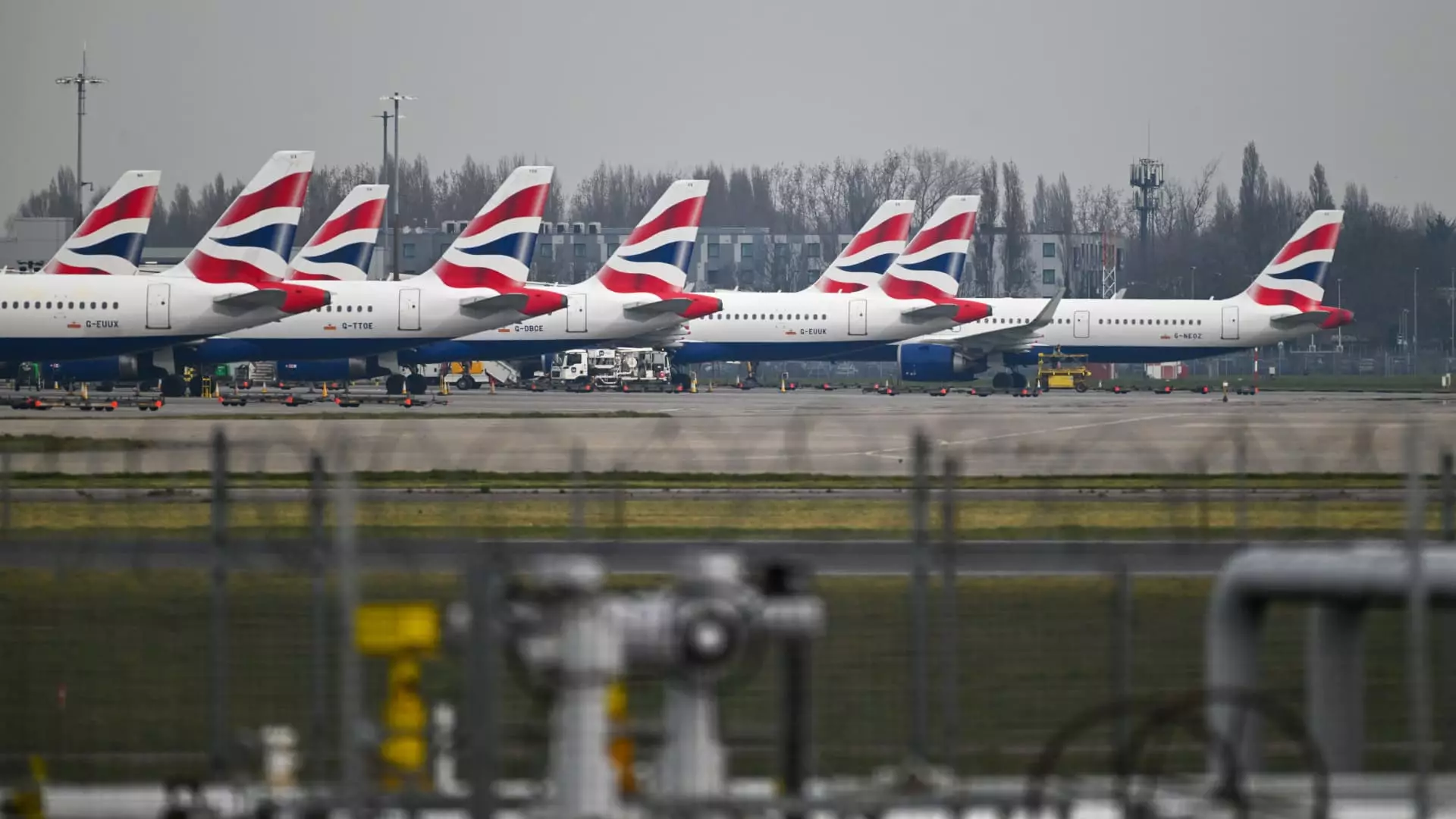In a devastating blow to international travel, Heathrow Airport—Europe’s busiest aviation hub—was forced to shut down due to a catastrophic fire at a nearby electrical substation. The chaos unfolded on a seemingly ordinary Friday, affecting tens of thousands of passengers and resulting in the cancellation of over 800 flights. For those who managed to be airborne when the news broke, they faced the harrowing reality of being diverted to alternate airports. With airlines scrambling to accommodate affected travelers, many were left stranded and bewildered.
The sheer scale of the disruption is alarming. More than 500 outgoing flights were canceled, while around 300 incoming flights were grounded. British Airways, a major player in Heathrow’s operations, was particularly hard hit, demonstrating the fragility of air travel in today’s interconnected world. Travelers were advised not to head to the airport unless explicitly permitted by their airlines, a poor consolation for those who found themselves at the mercy of forces beyond their control.
Lessons Unlearned: The Question of Infrastructure Resilience
The incident underscores a glaring vulnerability in critical national infrastructure. British authorities, including U.K. Energy Minister Ed Miliband, expressed deep concern over the potential lessons to be drawn from this incident. He stated that the National Grid had never encountered a fire of this magnitude before, prompting a serious evaluation of the robustness of the power supply framework at Heathrow.
While the immediate response was commendable—fire crews managed to address the blaze—questions linger about the reliability of backup systems. According to Miliband, even the secondary power generator was compromised, which raises eyebrows about the operational resilience of a facility that handles over 1,300 daily takeoffs and landings. Should we not expect better from one of the world’s key transport arteries? Infrastructure should not only be about current capacities but also about future contingencies.
Power Dependency: A Fatal Flaw
Willie Walsh, CEO of the International Air Transport Association, articulated what many industry leaders are hesitant to say out loud: the total dependency on a single power source at Heathrow constitutes a “planning failure.” This lack of foresight places an unreasonable burden on airlines, which in many cases are not financially liable for operational hiccups caused by infrastructure issues. Walsh’s plea for a fairer distribution of costs is crucial; this incident could very well mark a turning point in how responsibilities are assigned when such disruptions happen.
The travel chaos this incident ignited is symptomatic of a broader problem within the aviation sector regarding infrastructure and emergency preparedness. If airports are to be the gateways to our global economy, we cannot afford to treat power outages as mere inconveniences. They should be seen as alarming wake-up calls to improve and diversify the underlying systems.
Immediate Ramifications Beyond Travel
The fallout from the airport’s closure goes far beyond just canceled flights. Heathrow is not only a critical pathway for passenger travel, but it also facilitates the transport of approximately 4,000 tons of cargo daily. The implications for businesses reliant on this flow of goods are substantial. With supply chains already strained due to various global factors, the fire exacerbated existing vulnerabilities. This incident illustrates how interconnected air travel and commerce truly are.
Travel and tourism advisor Anita Mendiratta highlighted these broader issues, pointing out that the cargo disruptions could have ramifications far beyond the airport grounds. In an era where just-in-time delivery is a cherished goal for businesses, every hour lost at Heathrow spirals into a larger logistical nightmare.
Public Perception: Where is the Accountability?
While the immediate crisis was addressed by officials, complacency in the public arena deserves scrutiny. Heathrow’s technical failures, accompanied by vague statements from the authorities, leave much to be desired. Without a clear accountability structure, how can passengers expect the necessary infrastructure improvements? The lack of transparency in how the incident occurred and how future occurrences will be mitigated only serves to fuel suspicion among the traveling public.
As the dust settles on this crisis, it is imperative that both governmental and corporate entities work in unison to reevaluate their operational protocols. An entire airport brought to its knees by a fire simply shouldn’t happen in the 21st century, especially at such a critical juncture for global travel. The time for serious introspection and fortification of our essential infrastructures is now, or we risk finding ourselves in prolonged episodes of chaos in the future.

